Which Is Better Front or Hind Quarter of Beef

One of the most common questions we hear from those thinking about ordering large quantities of beef from us is "What cuts of beef will I get if I order a quarter, half or whole cow?"
That's a great question. Your question shows that you know that a steer is made up of more than just steaks — a lot more!
In this post and video we hope to explain a little more about each of the cuts of beef and where the best cuts of beef are found. Plus, we will discuss exactly what cuts you get if you order a quarter, half or whole beef from our farm.
What are the different cuts of beef?
The USDA divides a steer into eight regions. These eight areas are called the primal cuts, or the main cuts.
The eight primal cut names should sound very familiar to you since they are an essential component of how beef cuts are labeled.
Here are the eight primal cuts of beef:
- Chuck
- Rib
- Loin (short loin and sirloin)
- Round
- Flank
- Short Plate
- Brisket
- Shank
These primal cuts are then broken down into subprimals, and then they're cut into individual steaks, roasts and other retail cuts.
Whether you buy a quarter or half beef directly from our farm, or you purchase from a local retailer, you get portion cuts. A portion cut is individually wrapped, ready to cook cuts of beef like steak, roast, ribs, and brisket.
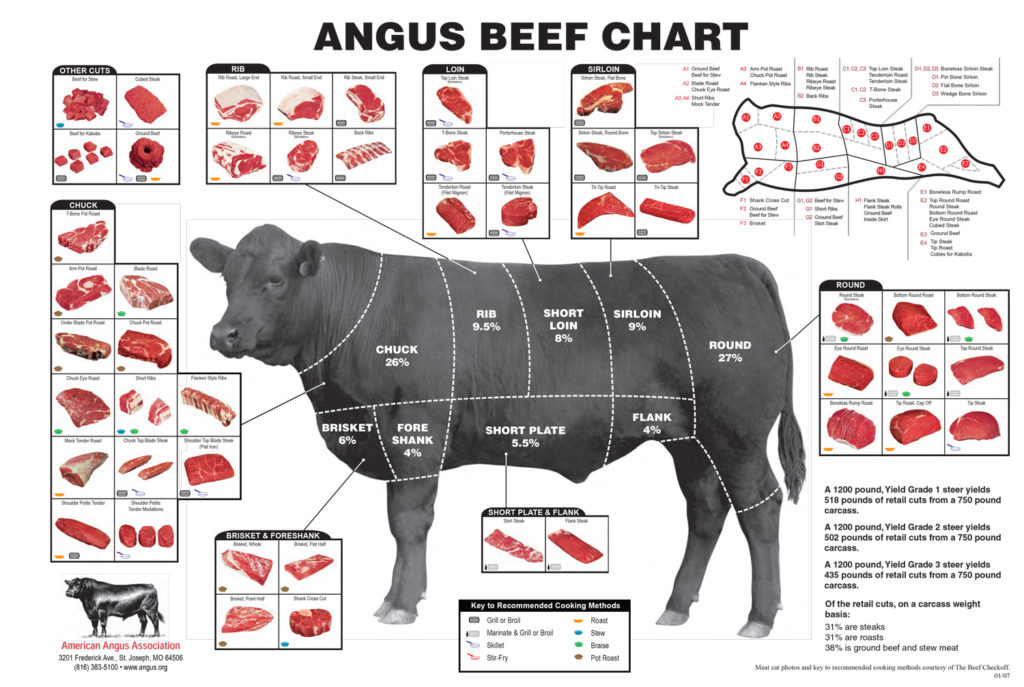
Where are the best cuts of beef found?
The best, most expensive and tender cuts of beef are always from the center of the steer, which is the loin or rib section. The four most popular cuts from this area are the tenderloin (a.k.a. filet mignon), ribeye, strip and T-bone steaks.
If you're wondering, "why the center of the steer?" Take a moment and look at the diagram above. When an animal is alive, their legs and neck muscles do most of the work. So, the muscles there are firmer and that beef is the toughest. The loin and ribs are at the center of the animal and they don't do much work, so they're tender cuts.
Another way to say this that you may hear from your butcher is that "beef gets more tender as the distance from horn and hoof increases."
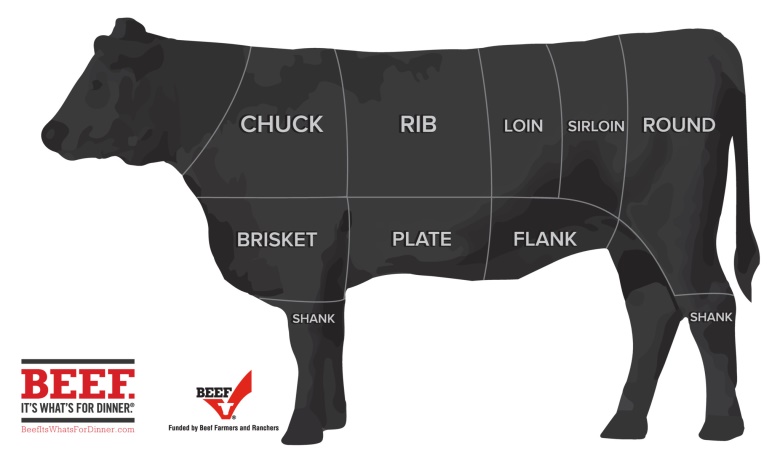
Why are there so many different names for cuts of beef?
How cuts of beef are named can be very confusing to anyone. Even us!
One of the many reasons there is confusion is because grocery stores and butchers can cut beef in a variety of ways and name it however is best for their store or region. In fact, one study showed that many grocery stores carry more than 60 different beef products.
For example, a strip steak can also be called a NY Strip, KC Strip, or hotel steak, just to name a few.
When you order from our farm, we make it as easy as possible and cuts of beef are labeled with the most common name for the cut. So with the example above, it's a "Strip Steak."
Cuts of Beef Explained:
Since you probably don't want to carry around a beef cuts chart in your pocket, here's what you need to know about each of the cuts:
Chuck:
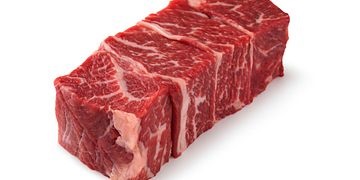
Meat from the chuck primal cut is from the cow's shoulder. Cows use their shoulder a lot, so it's a tougher cut of beef. However, it's also a very flavorful cut, and butchers cut it in a variety of ways so you have lots of options at the grocery store.
Types of cuts you'll see for chuck are ground chuck (hamburger), flat-iron steak, chuck short ribs, shoulder tender medallions, chuck pot roast, blade roast, boneless chuck short ribs, stew meat, country style ribs, and top blade steak, just to name a few.
You should choose chuck beef when you want lots of flavor, but need to be cost conscious too.
Brisket:
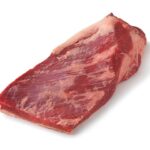
The brisket is the steer's breast. Brisket is usually tough and contains a substantial amount of fat, but don't let that fool you! Chefs know that if you tenderize it with a marinade or rub, and cook it low and slow, it'll melt in your mouth. Brisket is primarily used for barbecue, corned beef or pastrami.
Shank:
The shank is located at the animal's forearm in front of the brisket. It is one of the toughest cuts. One of the most famous dishes that comes from the shank is Osso Buco, which requires braising to make the meat more tender. Make stews and soups with the shank.
Ribs:
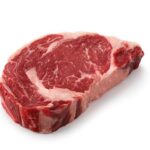
The cow's ribs and backbone make up the ribs. There are 13 pairs of ribs, but only the last section (6-12) are in the primal section of the ribs. The others are in the chuck cut. Ribs have lots of flavor and marbling. Types of cuts you'll see for ribs are Delmonico steak, boneless ribeye roast, cowboy steak, ribeye steaks and beef short ribs. Choose ribs when you want a tender cut of beef with extra marbling.
Plate:
The plate, or short plate, is the other source of short ribs and it's found near the abdomen. It is fattier. Make fajitas, pastrami, skirt steak, Philadelphia steak and short ribs with this cut and you'll be happy with the results.
Loin:
The loin is where the most expensive cuts of beef come from. It is located at the top of the steer directly behind the rib, and since it's not a heavily used muscle, it's very tender and flavorful. The loin has two parts: shortloin and sirloin.
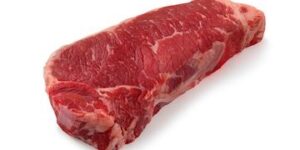
Popular cuts from the shortloin are filet mignon, tenderloin steak, T-bone, Porterhouse steaks, strip steak, New York Strip, and KC Strip.
The sirloin area is a little less tender than the shortloin, but it's also more flavorful. Common cuts from the sirloin area are sirloin steak, center cut sirloin steak, top sirloin, bottom sirloin, ball tip steak, Tri-Tip Roast and Tri-Tip Steak.
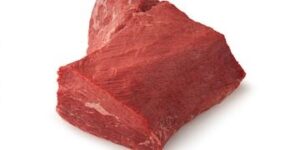
Round:
The round is a lean and inexpensive cut. It's found at the cow's rump and hind legs, so it's sometimes tough. When you're at the store, you'll often see round sold as ground beef. Other common cuts are round steak, eye of round, tip steak, tip roast, top round and bottom round roasts.
Flank:
The flank is located below the loin. It has no bones, and is very flavorful but also very tough. It used to be less expensive at the grocery store, but this has started to change because flank steaks are known for being lean. Since consumers want lean meat more than ever before, it's increased flank steak's popularity and price. Popular flank cuts are flank steak and London broil.
What cuts of beef come with a quarter or half beef from your farm:
When you order a quarter or half beef from our farm, we use a standard cut list. The reason for this is because you are sharing the animal with several other people. In order for everyone to get an equal number of cuts, we have to cut the animal in a standard way.
If you order a whole beef, you can customize the cut list however you'd like. We help walk you through this process.
Let's say you decide to purchase a one-fourth of a cow from our farm. With a quarter beef, you would get about 110 pounds of beef. Of this, 50 pounds would be ground beef, and the remaining 60 pounds would be steaks, roasts, brisket, etc.
- Ground Beef (approximately 50 lbs with a quarter beef, and 100 lbs with a half beef)
- Steaks
- Filet Steak
- Ribeye Steak
- Sirloin Steak
- Skirt Steak
- Strip Steak
- Brisket
- Roasts
- Chuck Roast
- Arm Roast
- Rump Roast
- Round Roast
- Stew Meat
- Kabob Meat
- Beef Ribs
- Soup Bones
- Miscellaneous
- Liver (if desired)
- Heart (if desired and if available based on those you're cow-pooling with.)
- Tongue (if desired and if available based on those you're cow-pooling with.)
What about Delmonico and Club Steaks?
A comment we sometimes hear is that people are surprised that there aren't more unique cuts on our standard beef cut list, such as Porterhouse Steak, Delmonico Steak, Club Steak, etc.
The reason for this is because a steer is made up of more than just steak. In fact, the number of steaks that can be cut from a steer is surprisingly small.
Let's explain this even more by looking at one cut of beef.
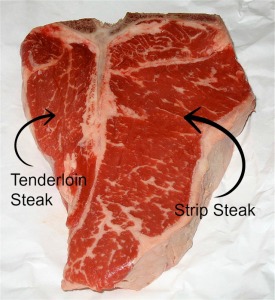
You're probably familiar with a T-bone steak with its famous "T" shaped bone in the center. Depending on how you cut the T-bone and the size of it, it can have many different names.
For example, if you decide to cut the bone out, you would no longer have a T-bone. Instead, you would have two distinct cuts — a tenderloin (or filet) and a strip steak.
And if it's an extremely large T-bone, it would be called a Porterhouse Steak, not a T-bone. According to the USDA, if the tenderloin section that is at least 1.25 inches across at the widest section, it's a porterhouse steak. However, if it's between 1.24-0.51 inches, it's a T-bone. If it's less than that, it's a bone-in strip steak.
Keeping in mind that there's a limited amount of beef in each animal, if you're purchasing a whole steer, and you want filets and strip, you won't get T-bone or Porterhouse steaks. You can have EITHER t-bone steaks OR filets and strips. You can't have both since all of those cuts come from the same section of beef.
There are plenty of other examples we could give like this where steaks have slightly different marketing names, but they're really extremely similar cuts.
What if I purchase a whole cow?
If you order a whole beef, you have a lot more cutting options since you're not cow-pooling with anyone else! You're also sure to get the one-per-animal parts (like the tongue and heart) if you want them. We walk you through all of your options if you decide to purchase a whole steer.
When I purchase a quarter or half beef, what part of the animal am I getting? What is a side of beef?
Technically, a side of beef is literally one side of the beef carcass that is split through the backbone. Each side is then halved between the 12th and 13th ribs. These sections are called the forequarter (front of the cow) and the hindquarter (back of the cow).
However, when you purchase beef from our farm, we do what's called a mixed quarter or mixed half. That means that we equally divide all parts of the animal so that you get cuts of beef from the front and back of the cow.
What about cuts of beef that there's just one-per-animal, like the tongue and oxtail?
Great question! Just like humans, there are certain parts of a cow that are one-per-animal, like the tongue, oxtail and heart. If you order a quarter or half beef, it's first-come-first-serve. If you want the heart or tongue, please tell us when you order and we'll let you know if it's still available for your cow.
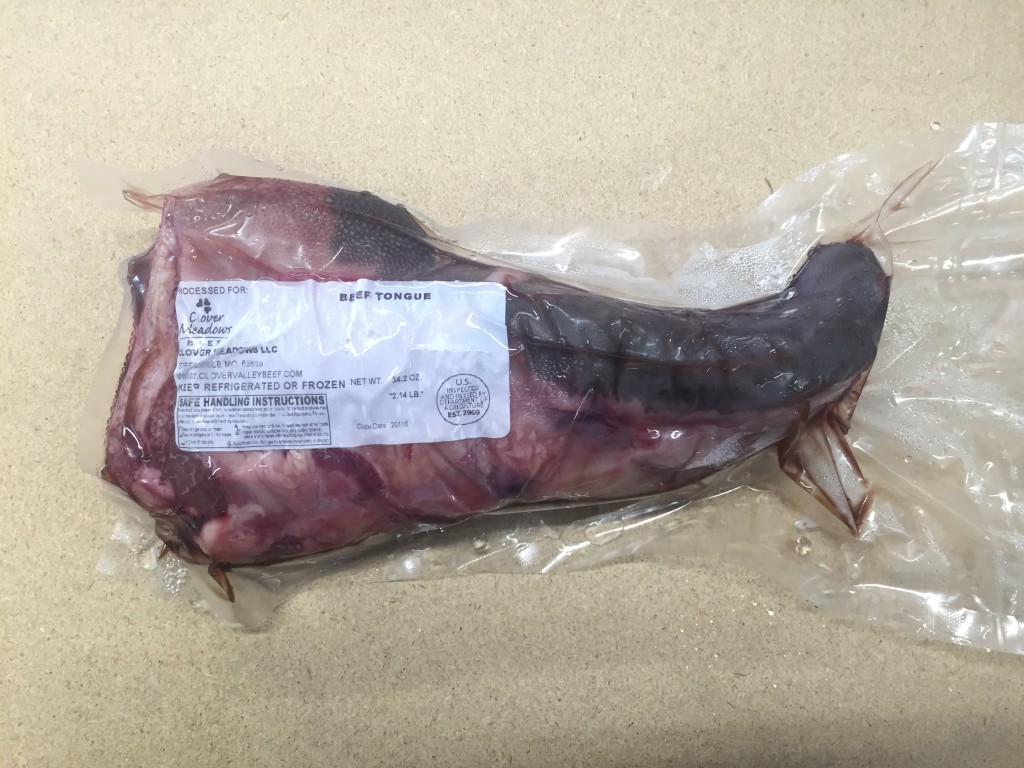
Links to our favorite beef cut charts

One more thing!
Do you want to learn more about beef? Below are a few popular beef posts and recipes you may like. In addition, we have an entire ebook about beef that goes through purchasing and preparing beef from a farmers perspective.
- Buying a Cow. How Much Beef Is It?
- Is It Done Yet? The Best Meat Thermometer
- Defrosting Meat: 4 Safe & Easy Ways
- Slow Cooker Pepper Steak
- Prime Rib Roast with Garlic Herb Butter
We have a weekly e-newsletter where we share about farm happenings, when our next beef availability is, and all things beef. When you do, you'll get a cheat sheet with 9-must-ask questions before buying beef directly from a farmer.
Have questions?
Do you have other questions? Don't hesitate to reach out to us. We love to talk beef!
We participate in the Amazon Services LLC Associates Program, an affiliate advertising program designed to provide a means for us to earn fees by linking to Amazon.com and affiliated sites. See our disclosure policy for more details.
Source: https://www.clovermeadowsbeef.com/cuts-of-beef/
0 Response to "Which Is Better Front or Hind Quarter of Beef"
Post a Comment